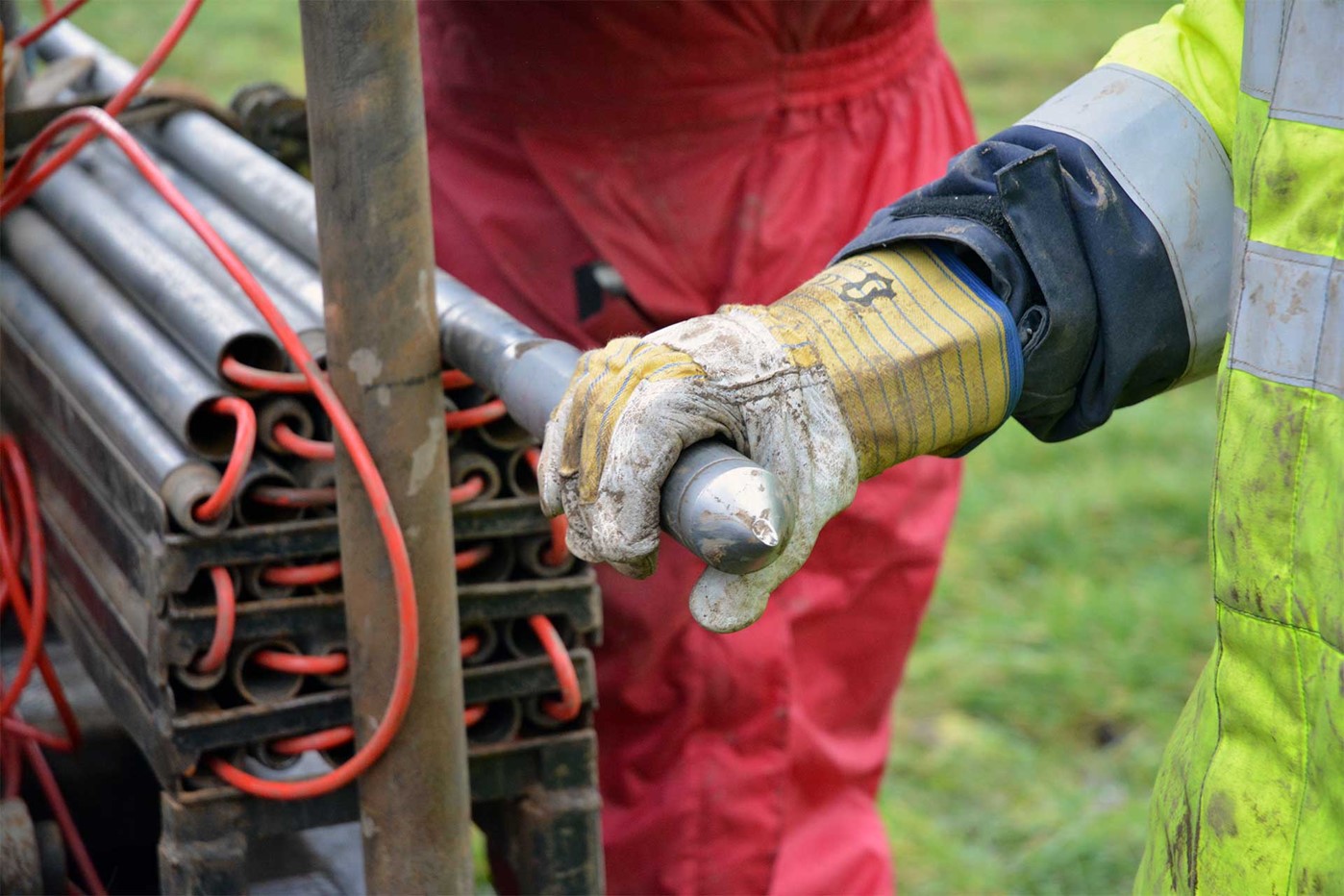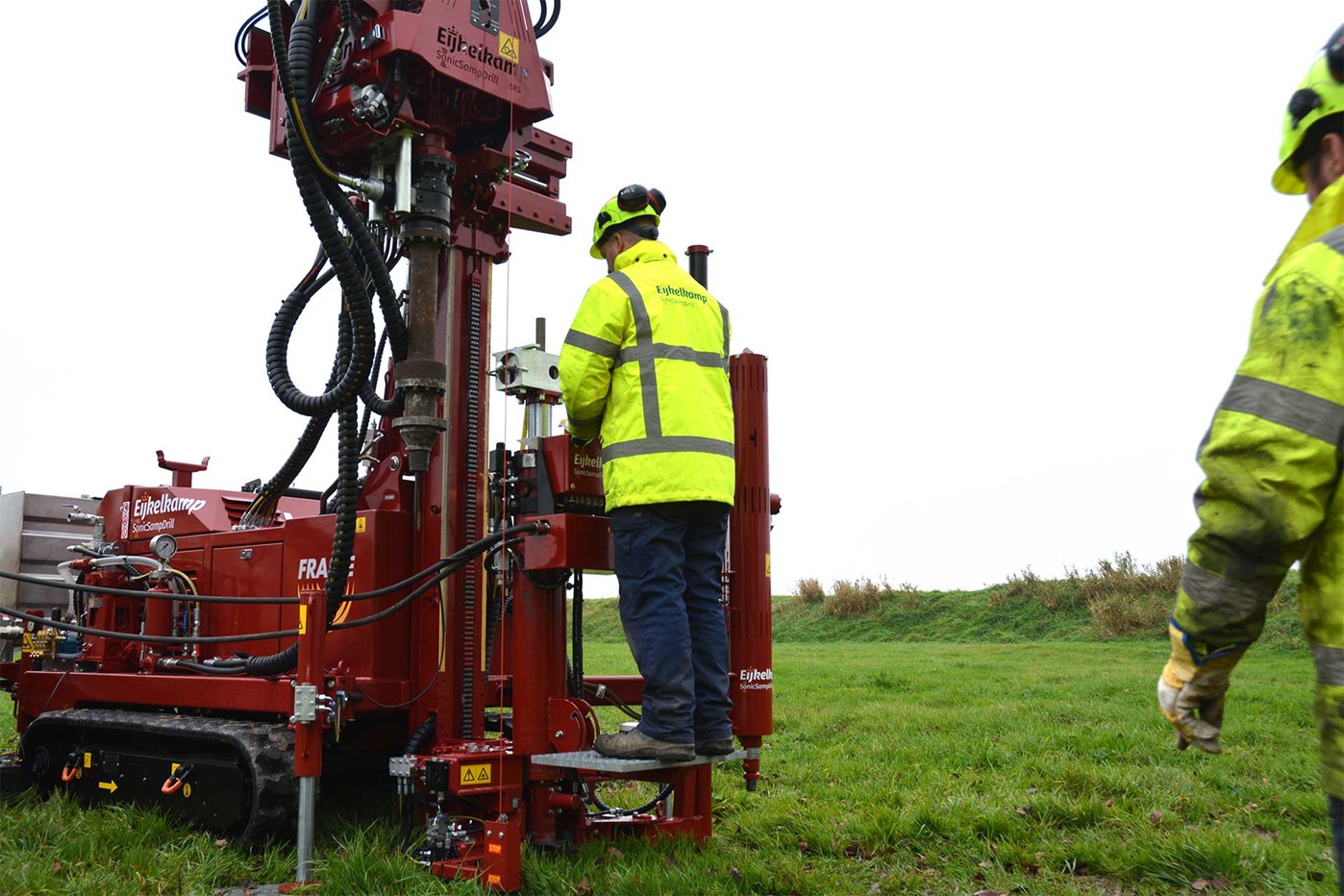While in certain parts of the world Standard Penetration Testing (SPT) is the most widely used geotechnical soil investigation method, as with every method, it does have its limitations. In most cases, those limitations are simply accepted because of a supposed lack of an alternative. Cone Penetration Testing, or CPT, is a well-proven soil investigation method with a 90-year history. It not only offers a suitable alternative, in many instances it is even a more appropriate method than SPT.
SPT uses a hammering technique to drive a split spoon sampler into the ground at the base of a borehole. Geotechnical engineers can then obtain an indication of the soil’s penetration resistance based on the number of hammer blows required to move the tube a predetermined distance (the so-called N value). This result can then be used as input for many geotechnical engineering purposes.
SPT is often the favoured technique in many parts of the world because it is familiar and relatively easy to perform, while providing data that is considered to be generally accurate. The usefulness of SPT results depend greatly on the soil type. Fine sands provide the most useful results, and coarse and silty sands provide reasonably useful results. But in many soil types, like cohesive soils, gravelly soils and even loose sands, the SPT method provides results that are often an inaccurate depiction of the actual soil conditions.
The core problem with the SPT method is that it provides a single data point at intermittent depths (such as every 5 ft or 1.5 m), which are then connected by straight lines to create a profile. This process of ‘connecting the dots’ provides results that “are affected by many variables allowed in the design and execution of the test” (ASTM D1586).
Cone Penetration Testing (CPT), on the other hand, collects data points continuously as the cone penetrates the soil. In the CPT process, a cone with standardised dimensions is pushed into the soil at a standardised rate. As it is pushed deeper and deeper into the soil, the cone can simultaneously measure stress (tip resistance), sleeve friction and dynamic pore pressure.
These parameters together accurately characterise soil stratigraphy and soil behaviour. Moreover, these three measurements can be used in various correlations to estimate a wide variety of soil properties.

Figure 1: CPT is performed with a cone attached to a string of rods

Figure 2: Performing CPT with a drill rig a cost-effective way to explore CPT
CPT cones can be inserted into the ground using of a variety of pushers that can be mounted on a truck or a crawler (either full-size or a small compact crawler), and even on a drill rig.
The latter allows drilling companies to begin exploring CPT as an alternate soil investigation method in a very cost-effective manner.
CPT provides a broader characterisation of the soil, as it measures three different parameters instead of just one in case of SPT. In addition, another key benefit of CPT over SPT is real-time results in the field. There’s no need to transfer soil samples to a lab and then wait for days or even weeks to get the analysis report. Instead, the report can be issued as soon as the cone has been pulled out of the ground and before the unit is moved to the next location. In addition, CPT does not require a borehole for the testing, so there are no cuttings and no spoilage, which, with the current, increasingly stringent regulations, is a major advantage.
Many contractors are now choosing to begin using CPT. Why? Because in terms of accuracy, data reliability, cost-effectiveness, and the details in the soil profile it returns, CPT almost always provides better results than SPT.
For more information about these products please visit our CPT product category, or feel free to contact our CPT specialists via CPT@eijkelkamp.com.